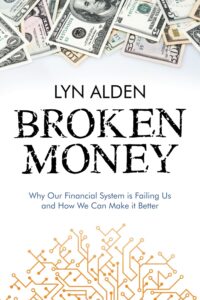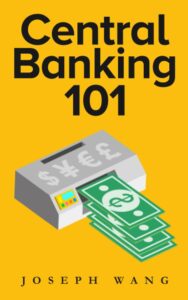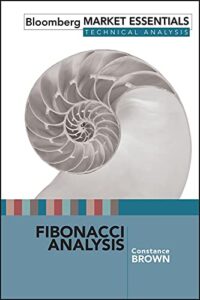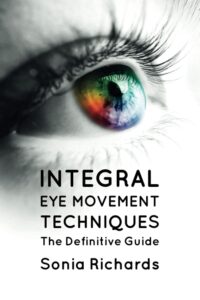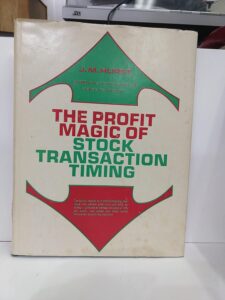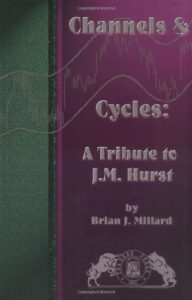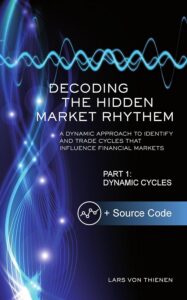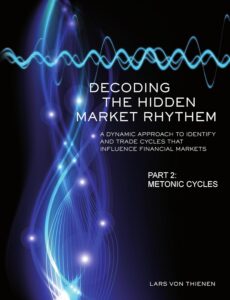Recommended Reading List
A Comprehensive Overview of the Past, Present, and Future of Money
Broken Money explores the history of money through the lens of technology. Politics can affect things temporarily and locally, but technology is what drives things forward globally and permanently. The book’s goal is for the reader to walk away with a deep understanding of money and monetary history, both in terms of theoretical foundations and in terms of practical implications.
Continue Reading
From shells to gold, from papyrus bills of exchange to central banks, and from the invention of the telegraph to the creation of Bitcoin, Lyn Alden walks the reader through the emergence of new technologies that have shaped what we use as money over the ages. And beyond that, Alden explores the concept of what money is at its very foundation to give the reader a framework to analyze and compare different types of monetary technologies and monetary theories.
The book also takes a distinctively human look at how money impacts the lives of real people, and how new monetary technologies shape the power structures within society.
In the modern era, energy abundance and technological enhancements have broadly improved human well-being, but the global monetary system has been slow to keep up. There are over 160 active currencies in the world, each with a local monopoly over its own country, and with little or no acceptance elsewhere. Many of them are rapidly diluted, which continually devalues the savings and the wages of the billions of people who live and work within those jurisdictions. Being born in the “wrong” country makes saving money far harder than it needs to be.
Nigeria has a population of over 200 million people and has averaged 13% annualized inflation over the past decade. Egypt cut its currency in half relative to the dollar twice over the past decade, which instantly devalued the savings and wages of its 100 million citizens. Dozens of countries have experienced at least triple-digit year-over-year inflation within the past four decades, including Brazil that outright hyperinflated in the 1990s while it was the fifth most populous country in the world.
Europe and Japan had $18 trillion worth of negative-yielding bonds in 2019, right before a wave of inflation wiped their purchasing power away. In 2021, the chairman of the U.S. Federal Reserve dismissed the idea that the sharp rise in the money supply from the pandemic stimulus would lead to price inflation. By 2022, as major inflation emerged, the chairman rapidly changed his outlook and tightened monetary policy so quickly that it led to the failure of some of the largest banks in the country.
How did we get to this point? Why isn’t our money better than this in the 21st century? Broken Money answers these questions by examining the current mix of technology that has led to these limitations, and then explores emerging technologies that may be able to provide us with a monetary system that is fit for the modern era.
Central banking is magic. With a few words, the Fed can lift the stock market out of desperation and catapult it towards euphoric highs. With a few keystrokes, the Fed can conjure up trillions of dollars and fund virtually unlimited Federal spending. And with a few poor decisions, the Fed can plunge the entire world into a recession. The Federal Reserve is one of the most powerful institutions in the world, and also one of the most difficult to understand.
Continue Reading
The Fed acts through its Open Markets Desk, which sits at the heart of the global financial system as the world’s ultimate and limitless provider of dollars. On behalf of policy makers, the Desk gathers market intelligence from all the major market participants, sifts through reams of internal data, and works behind the scenes to keep the financial system intact. It is responsible for all of the Fed’s market operations, from trillions in quantitative easing to hundreds of billions in repo and FX-swap loans. The financial crises of 2008 and 2020 abated only through the emergency interventions of the Desk.
Joseph Wang spent five years studying the monetary system as a trader on the Desk. From that vantage point, Joseph saw firsthand how the Fed operates and how the financial system really works. This book is a distillation of his experience that aims to educate and demystify. After reading this book, you will understand how money is created, how the global dollar system is structured, and how it all fits into the broader financial system.
A Great Classic for Three Decades: Now In Its 10th Edition, Consider What This “Definitive Text” Offers You Take a moment to look over your books about investing. Have any of them given you a successful method for making profits and reducing risks? Is there even one such book that has proven reliable over the years? Alas, most investors would say “no.” That’s because so few investment books are “classic” in the true sense: For years investors keep buying the book, and they keep using the method to make the most of their opportunities.
Continue Reading
Three decades years ago — 1978 — is one of the last times an investment book was written that is worthy of being called “classic.” One of the two men who authored that book was a 26 year-old market analyst working at Merrill Lynch’s headquarters on Wall Street. The young man had earned a lot of attention in a short time by using a forecasting tool that almost no one had heard of. Yet his market forecasts were startlingly accurate: Robert Prechter was the young man’s name, and he used a method called the “Elliott Wave Principle.” A. J. Frost was one of the few other financial professionals who used the Wave Principle. In a distinguished 20-year career, Frost had likewise made many astonishingly accurate forecasts. His colleagues regarded him as the consummate technical analyst. Frost and Prechter met in May of 1977 and became fast friends. Eighteen months later, they published Elliott Wave Principle – Key to Market Behavior. The Dow Industrials stood at 790. But the brash forecast in this new book called for a Great Bull Market. It became a runaway best seller. Three decades is enough time for investors to deem a book about an investment method as “classic,” and surely the jury is in on this one: Elliott Wave Principle is now published in seven languages, and continues to sell thousands of copies every year. In Europe, Asia and the Americas, literally millions of investors worldwide use or recognize the Elliott Wave method for profitable investing. Elliott Wave International is proud to present the 10th edition of this investment classic. It’s designed to help the Elliott Wave novice and the veteran practitioner. It’s time to consider what this definitive text offers you. Here’s a sample of what you’ll learn: The basic tenets of Wave Theory: You’ll read simple explanations of the terms, and how to identify all 13 waves that can occur in the movement of stock market averages. The rules and guidelines of Wave analysis: You’ll learn the basics of counting waves, how to recognize the “right look” of a wave, plus lots of simple steps for applying the rules. The scientific background of the Wave Principle: How you can see it in nature and the universe, in art and mathematics, even in the shape of the human body. Long-term waves: You’ll see how the Wave Principle gives history greater meaning, from the fall of the Roman Empire through the Middle Ages into the financial upheavals of the 20th Century. Understanding these monumental trends will help you position yourself for long-term profit and protection. Stocks, commodities and gold: The Wave Principle is your guide to the movements of any financial market. Few pleasures can match the exhilaration you’ll feel when a Wave Principle forecast has you in the market when it moves up, or takes you out just before it moves down. Obviously, Elliott Wave Principle – Key to Market Behavior is the perfect companion to Bob Prechter’s Elliott Wave Theorist publication. The book is essential reading for you to receive the most from what the Theorist says every month — in fact, all of EWI’s publications continually reference this book.
Only someone who is both a successful trader and a successful writer could pull off what Constance Brown has accomplished in this book: distilling Fibonacci analysis to two hundred or so comprehensive, clearly written, eminently practical pages.
Brown knows exactly what a professional trying to come up to speed on a new trading tool needs and she provides it, covering what Fibonacci analysis is, how it works, where it comes from, pitfalls and dangers, and, of course, how to use it. Basic trading strategies are touched upon in virtually every chapter.
Continue Reading
Fibonacci analysis is one of the most popular technical analysis tools, yet it is often used incorrectly. Brown quickly clears up common misconceptions and moves on to show, step by step, the correct way to apply the technique in any market.
Those with Fibonacci analysis software will learn how to use it with maximum effectiveness; those without will chart the market the old-fashioned way. All will find answers to the trader’s most important questions:
- Where is the market going?
- At what level should my stop be entered?
- Based on the size of my trading account, how much should I leverage into a trading position?
- Can I tell if I am in trouble before my stop is hit?
- How much should I buy or sell if given a second or third opportunity?
Occasional references to other tools–including Elliott Wave, W.D. Gann, and candlestick charts–and an extensive bibliography make this book richer for accomplished technical analysts without confounding the less experienced. Plentiful real-life examples and dozens of carefully annotated charts insure every reader will get maximum value from every minute spent with this book.
Written by the acclaimed entrepreneur, William J O’Neil, How to Make Money in Stocks: A Winning System in Good Times and Bad, Fourth Edition is a handy guide that that deals with the stock market and its intricacies. The author of this book has written down the hard-earned knowledge he gained from his own experiences as an investor.
The price charts of winning stocks from the past century have been listed out in the beginning of this book. These charts are supplemented with notes throughout in order to make them more comprehensible to readers. In this book, the author discusses his trademark CAN SLIM method of investing.
Continue Reading
The CAN SLIM method put together by the author consists of 7 steps which are aimed at maximising profits. This book imparts valuable information about the times when one needs to cut a loss and the times when one needs to invest and make a profit.
Mutual funds and exchange-traded funds are discussed as well by the author and he provides important tips on the ways to properly approach them while investing. The CAN SLIM method highlighted in this book was formulated by the author after analysing stock market patterns over the last 100 years.
How to Make Money in Stocks: A Winning System in Good Times and Bad, Fourth Edition runs its readers through important investment-related aspects such as an organisation’s growth rate, demand and supply, mutual funds, etc. The 4th edition of this book was published by McGraw-Hill Professional in 2009 and is available as a paperback.
Part of the Market Technicians Association (MTA) Required Reading list. Point and Figure charts are one of the great secrets of the Technical Analysis world. Highly sophisticated and with a thoroughbred pedigree, they can, however, be overlooked by traders today. Jeremy du Plessis – one of the foremost Point and Figure experts in the world – returns with a fully updated second edition of this definitive guide in an effort to redress this imbalance. This second edition, with an extensive revision to the text and introduction of brand new techniques, demystifies the world of Point and Figure charting.
Continue Reading
It includes a detailed explanation of the history and development of the technique from its invention to the modern day, and covers the makeup of the chart patterns, why they are created, and how to interpret them. Throughout, readers are encouraged to understand Point and Figure charts from first principles, rather than just remember the names of a series of patterns. It is the first major work for 50 years to discuss in depth the original 1-box reversal method of Point and Figure charting and contrast it with the more popular 3-box reversal method. Further, the explanation of how to use Point and Figure charts to project targets and calculate risk-reward ratios is the most comprehensive ever seen. Also featured in the second edition are: – A step-by-step analysis of the FTSE 100 Index using the 3-box method, as well as the NASDAQ Composite Index, using the 1-box method – A detailed discussion of optimising techniques – An in-depth chapter on Analysing Point and Figure charts, extensively rewritten from the first edition – A new explanation of how Point and Figure parameters are chosen and the implications of choosing them – Two new Point and Figure construction methods never seen before – Point and Figure’s contribution to market breadth, with a look at bullish percent and two brand new indicators – Full discussion of Point and Figure gaps and how they provide valuable information about the chart – Lesser known, more advanced techniques such as the use of moving averages, parabolic SAR and Bollinger Bands on Point and Figure charts – Price and volume activity histograms and how they provide information about support and resistance All this is illustrated with numerous colour charts and observations from years of trading experience. According to du Plessis, Point and Figure charts are the ‘voice of the market’. This book helps you listen to, and understand, that voice.
Discover the life-changing potential of Integral Eye Movement Techniques (IEMT), one of the fastest-growing solution-focused therapies in the world today, with this, the first and only definitive guide. This is an essential handbook for IEMT Practitioners and anyone curious to know more about this life-changing modality, shining a light on how individuals operate, how they become stuck in unhelpful thinking, and how to release them quickly and easily.
Continue Reading
This indispensable manual guides the reader through the fascinating science which underpins IEMT, explaining the techniques which can create positive change in the blink of the eye via straightforward, accessible language, diagrams and case studies.
A practical guide designed for use by experienced practitioners and novices alike, this book is designed to gift the power of IEMT to an international audience, empowering every reader with the tools to develop good mental health within themselves and others.
The author, Sonia Richards, is a Fellow of the Institute for Biomedical Scientists and a multi-skilled therapist, working widely with people with emotional and identity-based issues ranging from anxiety to PTSD for lasting change. She trains IEMT practitioners internationally, helping professionals all over the world to gift their clients lasting emotional resilience and release from unhelpful patterns of thinking.
This book for is for anyone curious to know more about this transformative set of techniques, and for practitioners seeking to further develop their skills in creating lasting change for their clients.
In addition to a detailed guide to IEMT techniques, the book offers a comprehensive guide to the Five Primary Patterns which can interfere with everyday life, creating anxiety, low self-esteem and self-sabotage. In-depth knowledge of these primary patterns underpins the work of the world’s leading IEMT Practitioners, and their detailed exploration within this book is central to underpinning readers’ understanding.
As this guide so eloquently illustrates, Integral Eye Movement Techniques can be used for or by anyone ready to create lasting change for the better. With this book, you can learn to self-administer these techniques as a means of improving your own health and happiness, and use IEMT with those around you as a means of helping them to improve their wellbeing. An invaluable guide for everyone – therapists, medical professionals, and people of all ages and walks of life – this is essential reading.
Continue Reading
For many years I have heard how valuable the work of J.M. Hurst has proven to those interested in the use of cycles in the pursuit of market profits. Many Traders Press customers have advised me how valuable any material would prove to them that would shed any additional light on the work of Hurst. It is with great pride that we present the work of Brian Millard, Channels and Cycles, which clarifies the original work of Hurst as well as updating it and bringing it forward to the present time.
Continue Reading
Millard, like other market technicians such as Jim Tillman and Peter Eliades, found the work of Hurst of such seminal importance in influencing his approach to market ysis that it became the cornerstone of his methodology. It is hoped that this work will prove valuable to the members of the investment comunity who are interested in the application of cycles and the work of Hurst. 255 pages. It should also be noted that Traders Press has recently reprinted the full-fledged training course on cycles authored by J.M. Hurst. This extensive course, which consists of 10 lessons encomping nearly 1,600 pages (including hundreds of 11×17 foldout charts) and 11 audio tapes, is the most comprehensive and practical material available anywhere for those interested in understanding how to use cycles to their benefit in investing and trading. It shows how to actually apply Hurst’s methods to actual trading situations, including actual buying and selling rules and applications. A fuller description of this course is available by clicking here: J.M. Hurst Training Course, and is available exclusively through Traders Press.
Simplify the complexity of financial trading and technical analysis with a new dynamic approach that is helping traders across the globe identify the trade cycles that influence financial markets.
Learn how to detect tradable cycles in the stock market properly, use such information to improve technical indicators, and forecast market turns using cycle analysis. Using layman’s terms, this helpful guide offers many trading examples using cycle analysis tools on major stock market indices, sentiment data, forex and cryptocurrencies, and many more.
Continue Reading
The book provides solid knowledge on dominant cycle analysis and ways to use it in the stock market for trading. Apart from the methodology, concrete examples of applying cycle analysis into cycle trading practice in the stock market are laid out in an easy-to-follow format. The presented approach differs from traditional static cycle approaches in that it takes a dynamic approach to cycles. The dynamic cycle approach builds upon existing research from J.M. Hurst “The Profit Magic of Stock Transaction Timing” (1970), John Ehlers “Cycle Analytics for Traders” (2013), and B.J. Millard “Channels and Cycles” (1999), and then takes both the theory and practice of cyclic-based trading to new levels, thereby extending the body of knowledge on cycle analytics. In particular, the unique dynamic approach attempts to identify the current dominant cycle in a way that can be used on financial charts at the right edge of the trading screen, where decisions must be made in real time.
This is a comprehensive book for traders who want to understand the technical underpinnings of cycle analytics used in trading decisions. It contains discussions of the theoretical background for cycle detection with Digital Signal Processing, true market examples, ready-made indicators, and source codes for different platforms, making it an all-around resource for both beginning and veteran traders who wish to match the pace of advancement in this field. The cycle detection framework provided in this book is backed by years of research, with an emphasis on simplicity for analyzing markets rather than mathematical purity. The presented dynamic approach will assist traders in implementing new indicators and trading strategies.
Decoding The Hidden Market Rhythm – Part 1 includes real market analysis examples on weekly, daily, and intraday charts for
- Major Markets: Dow Jones and S&P 500 Index
- Commodities: Gold & Silver
- Futures: S&P 500 & Nasdaq 100
- Forex: EURUSD, GBPUSD
- Sentiment: Social Sentiment Data (“Twitter”), VIX, Financial Stress Index
- Cryptocurrencies: Bitcoin
The presented methods, indicators, and strategies allow traders to use the cycle analytics methods in different trading and charting environments.
In this new third edition of the book (2017), we have decided to open our source code repository to give a quick start for readers who want to implement the tools in different forms and scripting languages.
Free, ready-made, and downloadable source codes with indicators for NinjaTrader, MetaTrader, C++, Excel, and cloud-based API integrations are included.
Now it’s time to get practical and start reading.
The book introduces correlations between markets and external energy cycles like gravity and geomagnetism. Digital signal processing techniques are used to reverse engineer Gann’s master cycles, resulting in a 100% mechanical cycle-based trading system that has shown a compounded growth rate of 20% per year over the last 30 years when back-tested using the Dow.
The book introduces new non-linear indicators and reviews the significance of a cyclic sentiment predictor for the Dow Jones Industrial Average Index.
Continue Reading
To that end, using daily data covering the period from 1935 to 2013, ancient cycles are considered as predictors to forecast daily sentiment for years ahead of time.
Forecasts plotted as predictive indicatorsare transformed into a mechanical trading rule whose profitability has been evaluated against the Dow buy-and-hold performance of 1990-2013. The results suggest that trading based on recurring sentiment significantly outperforms the Dow in nearly all performance metrics, including net return, profitability, and Sharpe ratio.
Includes TradeStation / EasyLanguage code to rebuild indicators and trading system. Generic pseudo code and step-by-step guidelines included.


